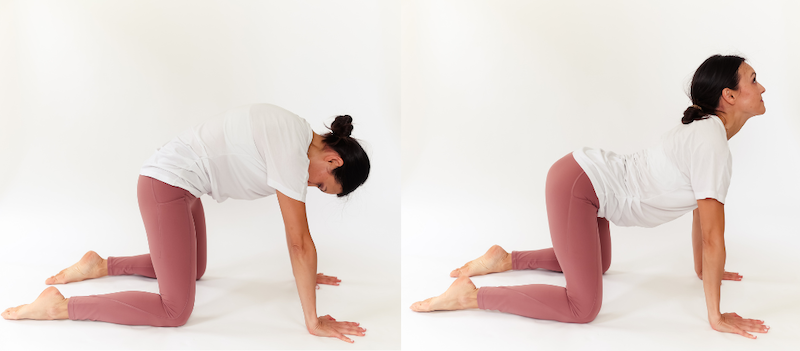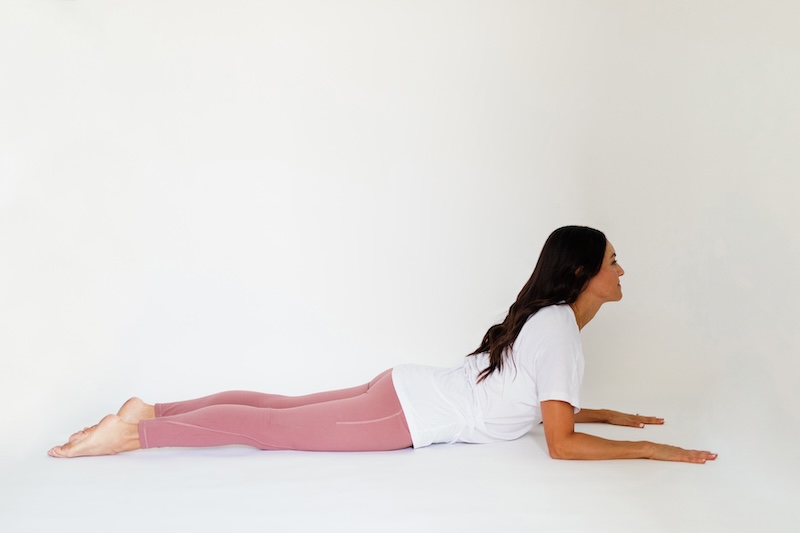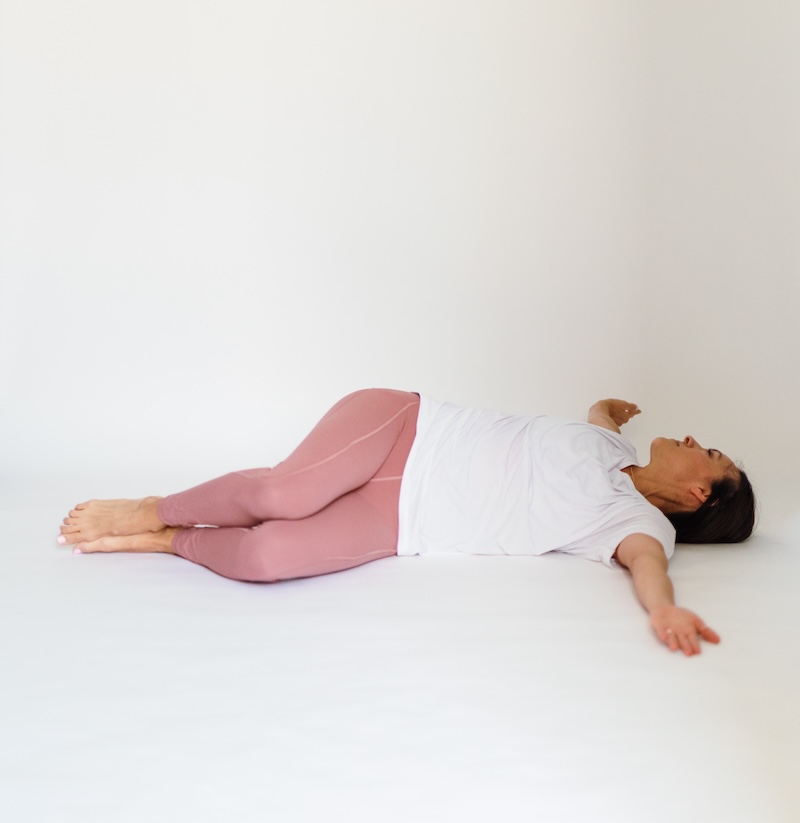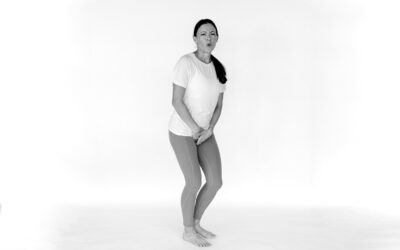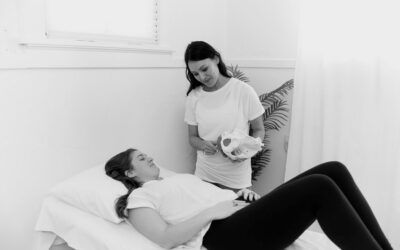Chronic pain is a pain. Especially in your back.
Can’t sit for too long. Can’t stand for too long. Bending, shifting, lifting; it all hurts.
Adenomyosis, a reproductive health condition, can cause some chronic lower back pain.
What is Adenomyosis?
Adenomyosis is when tissue like the lining of the uterus grows into the muscle wall of the uterus. This can cause your uterus to thicken and enlarge, sometimes up to triple its normal size.
This can cause symptoms like:
- Painful menstrual cramps
- Abnormal and/or heavy menstrual cycle
- Pelvic pain, including with penetrative sex
- Infertility
- Bloating or abdominal fullness
So can adenomyosis cause back pain, too? Absolutely.
What Causes Adenomyosis Back Pain?
Most people describe their adeno-related back pain as dull to severe aching in the lower back, groin, inner thighs, and hips. It often worses right before or during menstruation.
Lower back pain is an often overlooked symptom of adenomyosis, and there’s little research on the topic. One theory is about referred pain, which happens when pain in one part of the body causes pain in another part. Because, at the end of the day, our pain-sensitive nervous system is just one large interconnected circuit!
From a pelvic floor perspective, adeno-related back pain makes a lot of sense. The pelvis, spine, and corresponding muscles connect to your pelvic floor muscles. So, when your pelvic floor muscles experience pain, those connected muscle groups are likely to experience pain, too. Enlarged uteruses also put additional pressure on surrounding muscles and nerves, which may cause lower back and hip pain.
Accurately Diagnosing Adenomyosis Back Pain
Chronic pain, especially in women, is often undertreated. So please hear this: The appropriate level of chronic pain is exactly… zero. If you’re experiencing these symptoms, you deserve to be heard, diagnosed, and treated.
Adenomyosis is particularly underdiagnosed because its symptoms are similar to other reproductive health conditions, like uterine fibroids or endometriosis. Your doctor may recommend a pelvic exam, ultrasound, and imaging scans to diagnose adenomyosis.
Adenomyosis versus Endometriosis
The connection between adenomyosis and endometriosis makes diagnosing them without invasive procedures tough. In fact, endometriosis is actually a risk factor for developing adenomyosis.
The conditions are different, though. Adenomyosis is when endometrial tissue grows into the uterine muscle. Endometriosis is when the endometrial tissue grows in other places outside the uterus.
That’s what causes more varied symptoms in folks with endometriosis. If endometrial tissue grows on digestive organs, you may have stomach pain, which adenomyosis doesn’t cause.
Treatment for Adenomyosis
Estrogen promotes endometrial tissue growth. So, the less estrogen you have, the better. That means that most people find relief from adenomyosis after menopause.
Unfortunately there are not a lot of treatment options for pain management other than heating pads and pain meds. Long term many patients may have to have surgical intervention like a hysterectomy to treat the condition. Of course, there’s a big gap between nothing at all and removing my uterus.
Enter pelvic floor physical therapy.
A pelvic floor physical therapist can provide exercises and stretches to improve pelvic floor health and reduce back pain.
Here are some to get you started!
Physical Therapy Exercises for Adeno Back Pain Relief
#1 Cat/Cow
Get on all fours. Keep your hands shoulder-width apart and your knees directly below your hips.
Inhale deeply and curve your lower back, bringing your head up and tilting your pelvis. Exhale deeply and bring your abdomen in, arching your spine and bringing your head and pelvis down. Repeat the stretch.
#2 Cobra Pose
Lie stomach-down on the floor. Place the palm of your hand on the floor next to your shoulder, and hug your elbows into your body.
Press the tops of your feet, thighs, and pubic bone firmly into the floor as you inhale and straighten your arms, lifting your chest off the floor. Open your chest upward toward the sky and squeeze your shoulder blades together.
Hold the pose for 5-10 breaths. Breathe easy, exhaling as you release back to the floor.
#3 Book Openers
Lie on your side with your feet in line with your pelvis. Inhale, keeping your shoulders relaxed.
Lift the top arm up and over, behind your back. Follow your hand with your eyes. Concentrate on keeping your legs still and forward-facing.
Rotate and exhale. Pause the rotation and take a few deep breaths. Breathe out as you bring your arm back to the starting position. Repeat with the opposite arm.
#4 Thread the Needle
Begin on your hands and knees, with your wrists directly under your shoulders and your knees directly under your hips. On your exhale, slide your right arm, palm up, underneath your left arm.
Let your shoulder rest on the mat if possible. Soften and relax your lower back. Hold for 60 seconds.
Press your left hand into the floor and slide your right arm out. Repeat on the other side.
Get relief today.
Adenomyosis can cause a lot of tension down there. You deserve relief, and you can get it now.
Check out The Relaxation Series, exclusively on the V-Hive. Get exercises and stretches to relieve pelvic floor tension, support during painful periods, and alleviate back pain.
Stop suffering and start living. Check out the V-Hive Membership today! (Your first week is F-R-E-E!)
Sources and Further Reading
Atlanta Fibroid Center. (2022, October 26). Lesser-known symptoms of adenomyosis: Back pain & leg pain.
Cleveland Clinic medical. (n.d.). Adenomyosis: Causes, symptoms & treatment. Cleveland Clinic.
Ferguson, S. (2023, September 19). Adenomyosis back pain: Cause, timing, period, treatment. Healthline.
The Fertility and Gynaecology Academy. (2022, June 14). Endometriosis and adenomyosis – how it impacts fertility. The Fertility & Gynaecology Academy.
Jensen, A. M., Bewketu, B., & Sanford, D. (2011). Journal of Chiropractic Medicine, 10(1).
Ma, J., Brown, B., & Liang, E. (2021). Long‐term durability of uterine artery embolisation for treatment of symptomatic adenomyosis. Australian and New Zealand Journal of Obstetrics and Gynaecology, 61(2), 290–296.


